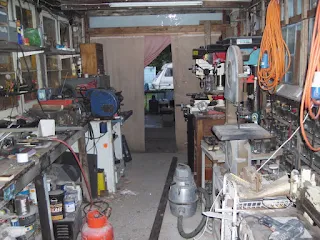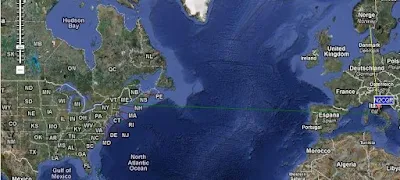 I suppose it was inevitable. After years of pushing the envelope with the tunnel diode, it seems like Michael, AA1TJ, is moving toward homebrewing his own transistors. Michael writes:
I suppose it was inevitable. After years of pushing the envelope with the tunnel diode, it seems like Michael, AA1TJ, is moving toward homebrewing his own transistors. Michael writes:Hey, I found a Yahoo Group of kindred spirits late last night, 2N1150_Down; where the interest is centered on early Germanium semiconductor devices. I downloaded a book from their files that, until now, I'd only heard about. Practical Transistors and Transistor Circuits, by J.S. Kendall, first appeared in the U.K. in 1954. Believe it or not, the subject of the book is how to make the "practical" transistors referred to in his title! Of course, these are point-contact devices built from a pair of cat's whiskers on a slab of "P-type" Germanium salvaged from diodes. I especially like where he writes, "Great care should be exercised owning to the anesthetic properties of the chloroform vapour...the constructor may not be aware of the danger until he is almost on the point of collapse." Oh brother!
Better yet, I found an article in the group's files taken from the March and April, 1954 issues of The Short Wave Magazine, by G3HMO. This fellow not only made his own transistor, he used it to build a one-transistor, 160m, transmitter and then went on to make contacts with it up to a distance of 30miles! He writes, "There is nothing impractical about making a point-contact transistor at home." Oh baby, crack me open a bottle of chloroform and let's get to it!
The photo above is, of course, the original point contact transistor from 1947. It looks do-able.
In searching for the picture I came across this interesting article from the author of the wonderful book on this subject "Crystal Fire" : "How Europe missed the Transistor"








































